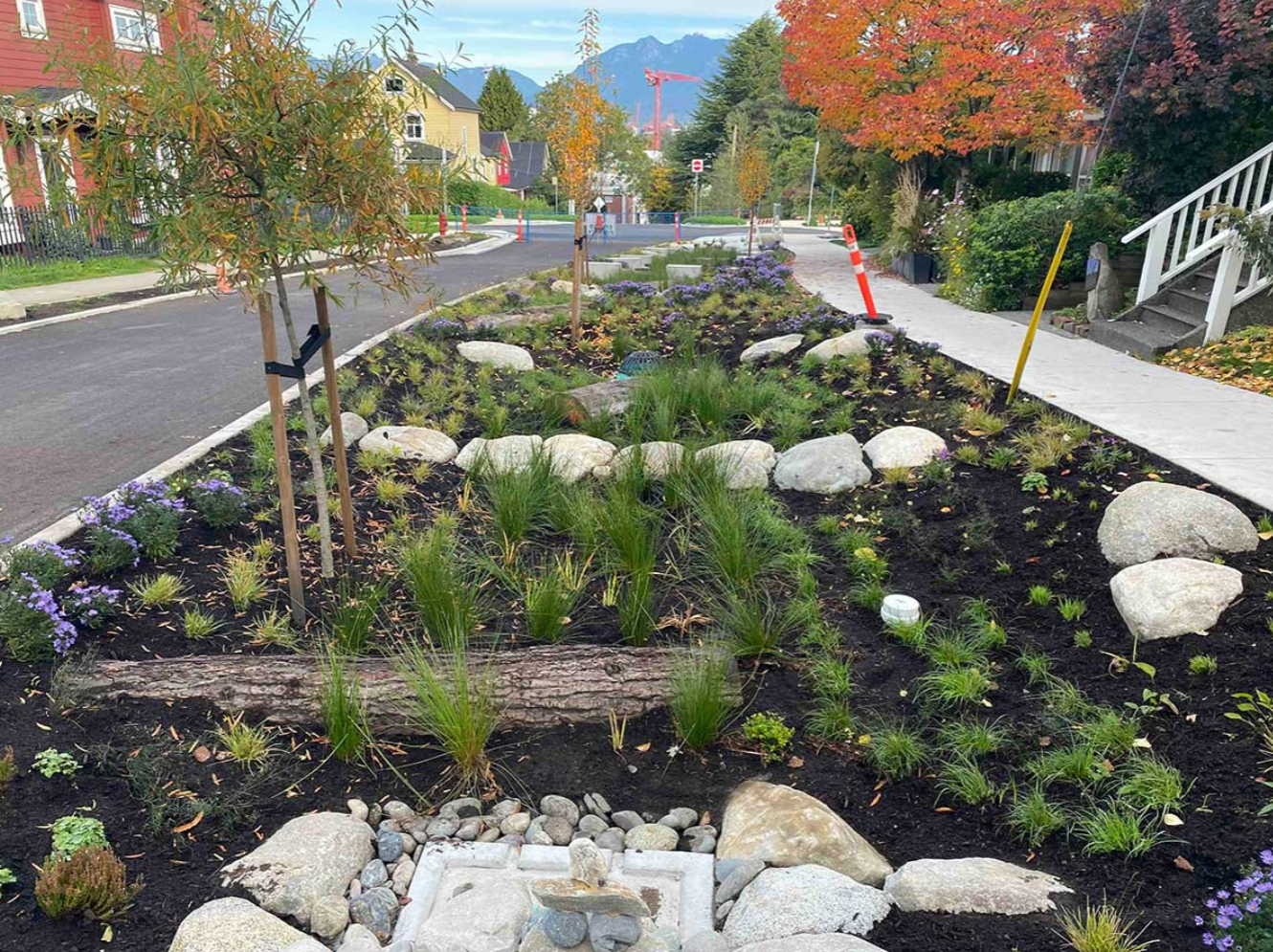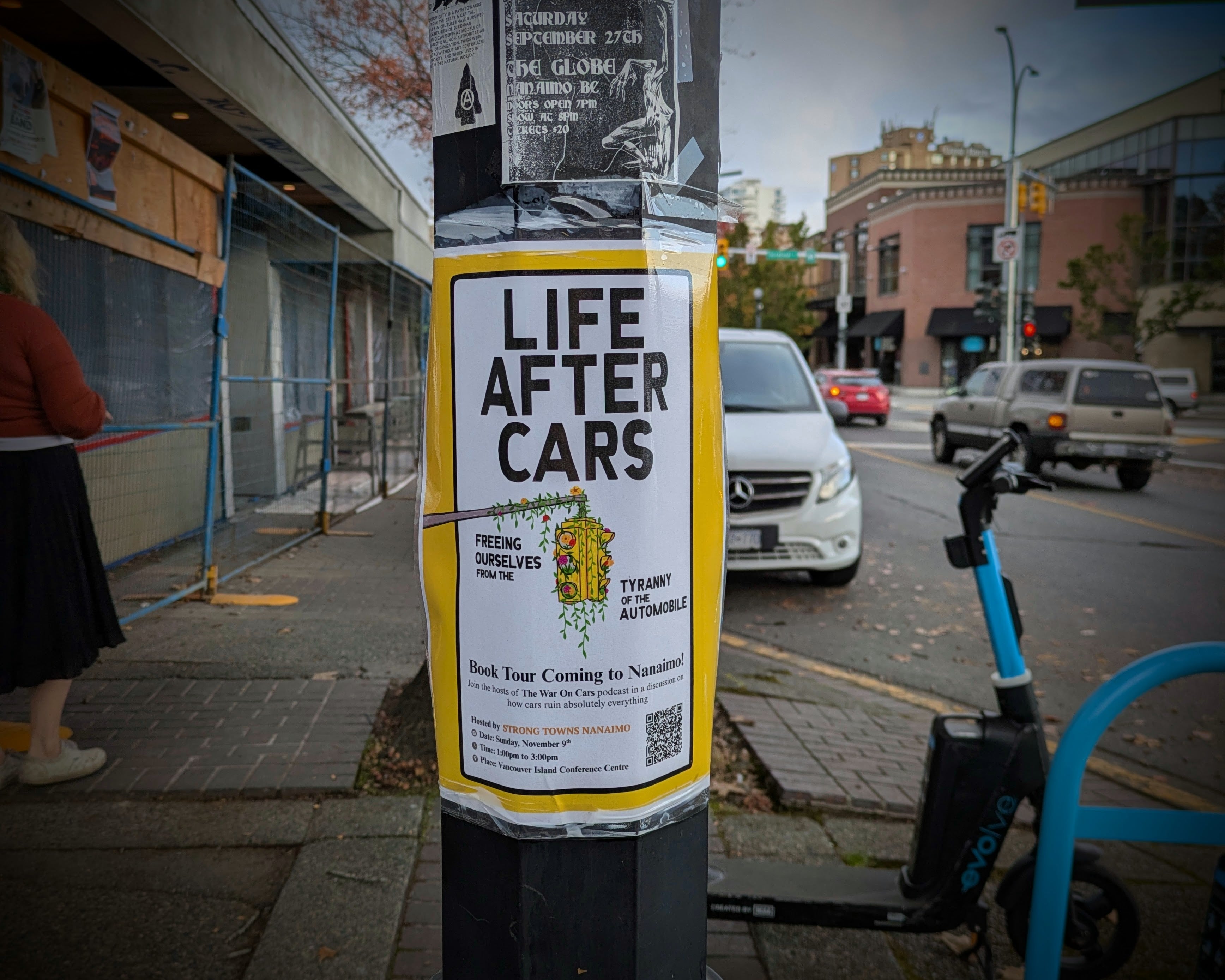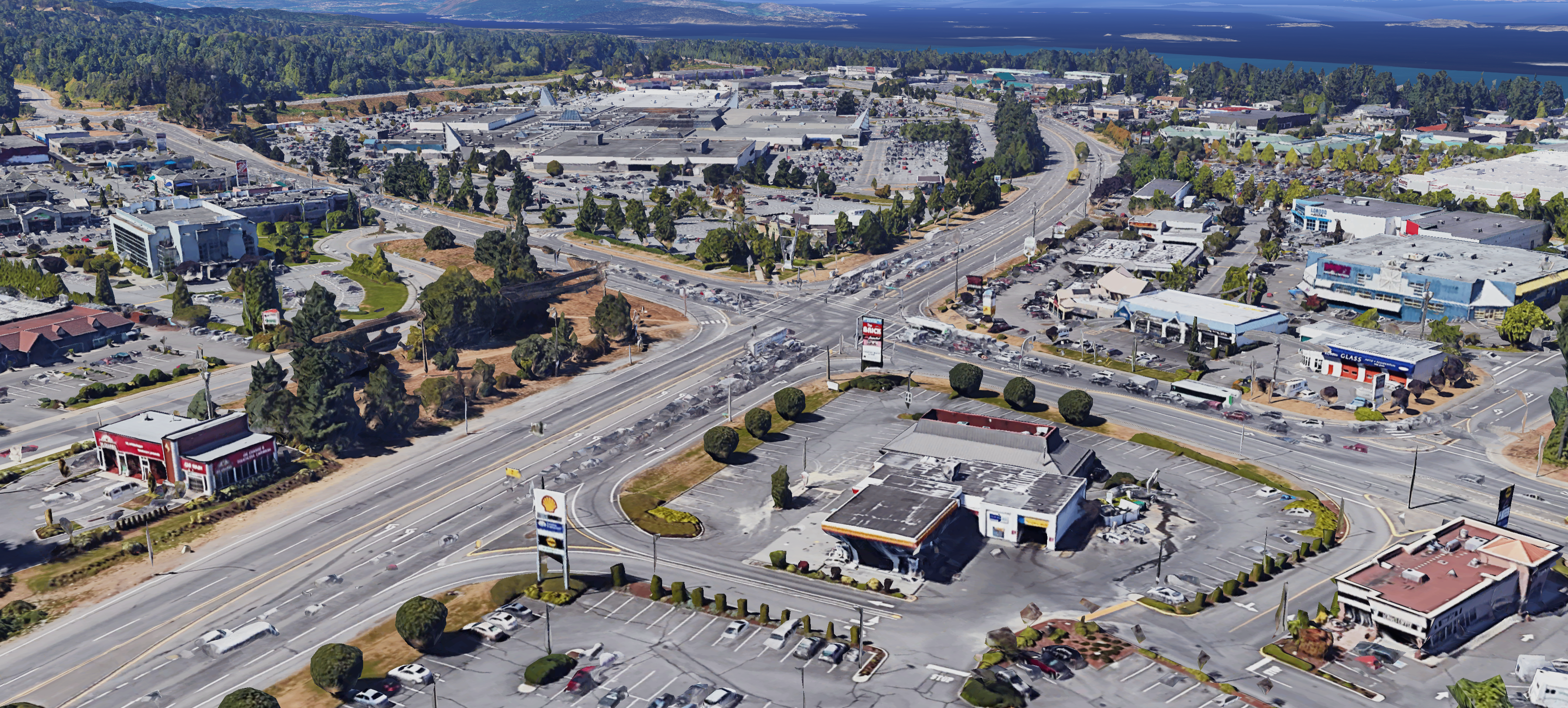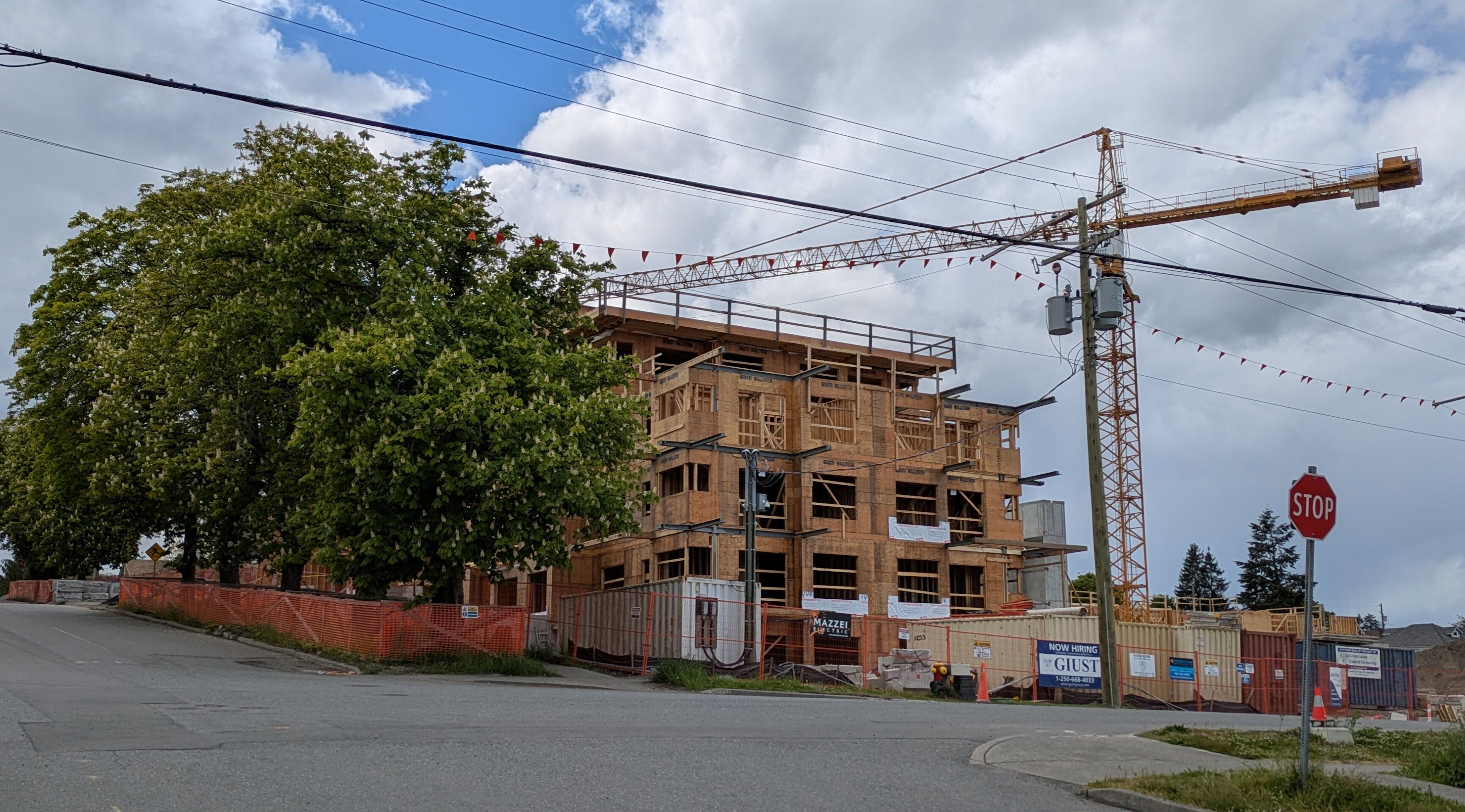It’s a simple equation: more trees equals a more beautiful streetscape, right? Who wouldn’t want to walk below a dappled canopy of trees on a warm summer day or under the protection of leafy branches during a rain shower? Much more pleasant than walking along a bare, windy, baking or otherwise exposed road, no? But is a beautiful street really the only reason to plant street trees? There are many benefits to planting street trees and increasing the urban canopy…
Safety for People Walking, Rolling and Driving
A long straight line of street trees will create a visual vertical wall and also – at full maturity – a lovely overhanging canopy that frames the street and provides a defined edge. This visual tunnel guides motorists’ movement, and forces speed assessment. Multiple studies from municipal transportation authorities have found people slow down while driving through a treed streetscape.


A vertical wall of trees will also provide a literal physical barrier between the pedestrians walking on the sidewalk and the motorists on the road. Street trees create more pleasant walking and cycling environments, encouraging and bringing about increased outdoor activity, potentially decreasing driving trips, while at the same time encouraging neighbourhood pride. Because of this sense of pride, surveillance of homes and businesses is increased, as is individual accountability. A sense of ownership and care for a neighbourhood creates a more secure environment.
Lowering Overall Energy and Home Repair Costs
Asphalt and concrete streets and parking lots are known to increase urban temperatures 3-7 degrees. These temperature increases significantly impact energy costs to homeowners. Through urban street tree planting, a properly shaded neighbourhood can reduce energy bills for a household from 15-35%. Reducing air conditioner use by 30% would save around $57. A tree protecting your home from wind and cold could save you 20% or more on heating costs, or over $120 per year. A tree will protect your home from the sun, rain and wind but it is often difficult to quantify the financial impact of these elements. As a general rule the more you can protect your home from the impact of natural elements the longer your home will last without needing repairs. Consider this; a tree absorbs the first 30% of most precipitation, that is 30% less rain on your roof and in your eavestroughs. It is also 30% less water needing to be deflected away from your basement with underground waterproofing systems.
Increasing Property Values and Infrastructure Lifespan
Unlike most material purchases, street trees increase in value the minute they leave the nursery and continue to gain worth as they mature. They add to your property’s resale or rental value by improving curb appeal. The United States Forest Service and the City of Toronto estimate that trees can increase property values anywhere from 5 to 20 percent.
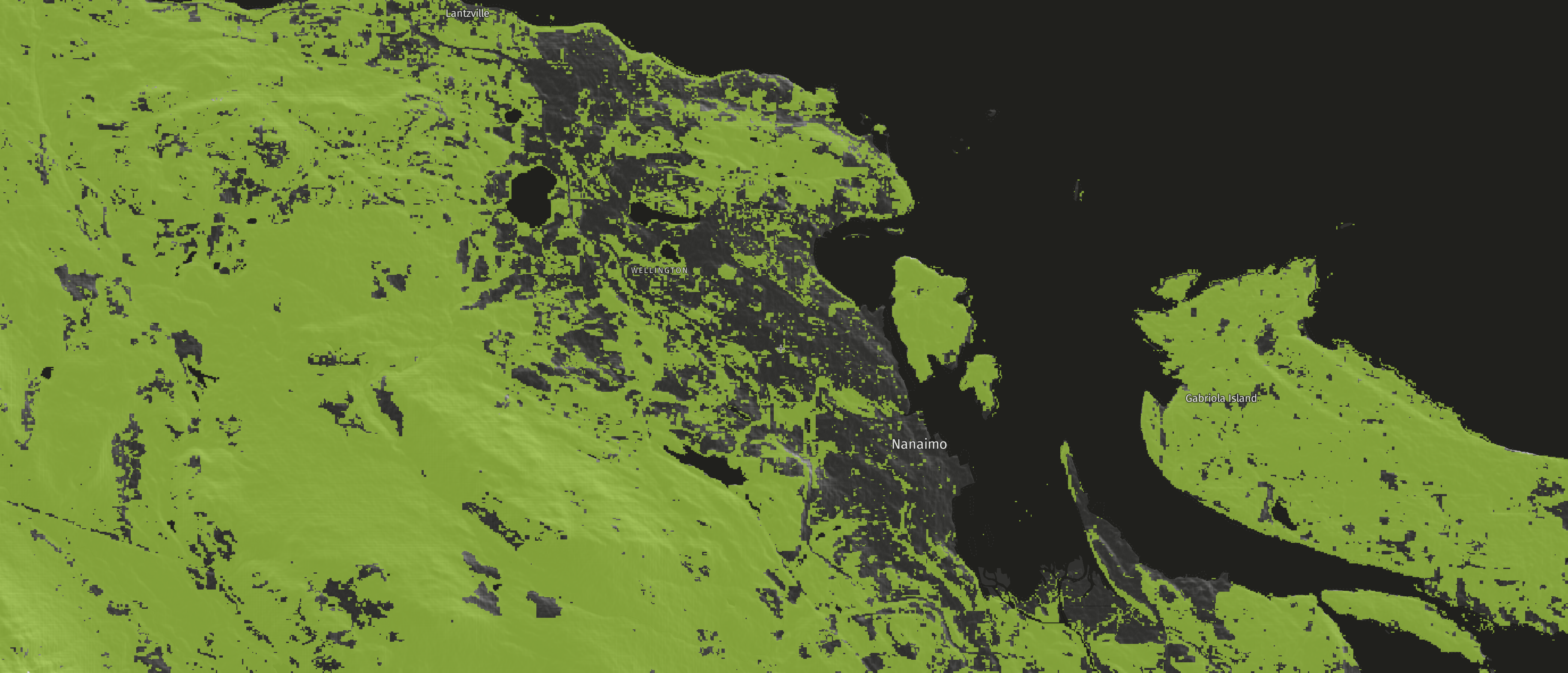 Map of urban tree cover in Nanaimo, where the green indicates tree canopy. (Global Forest Watch)
Map of urban tree cover in Nanaimo, where the green indicates tree canopy. (Global Forest Watch)
Can your little front yard tree really increase the lifespan of your driveway and road? Studies conducted in a variety of California environments show that the shade of urban street trees can add 40-60% more life to costly asphalt. This is based on the reduced daily heating and cooling (expansion/contraction) of asphalt. It might not be the flashiest benefit of a tree but the cost of new driveway asphalt or the inconvenience of road construction might make it a little more exciting.
Noise: Keep Out The Bad, Let In The Beautiful
Properly planted urban street trees can perform dual duties when it comes to noise pollution in our communities. A vertical wall of beautiful trees is the first line of defence against street noise. Acting as a buffer, a mature tree can reduce unwanted street and city noise by up to 6 decibels. In addition to deflecting unwanted noise, a well maintained tree will become a welcome home for animals and songbirds. Many developers, commercial landscaping companies and cities maintain strict guidelines for planting only native tree species to help ensure long lasting durability and success. Alongside native tree species come native birds and animals, whose beautiful music will help make your house a home for many years to come.
Nanaimo’s Tree Voucher Program
If you are a registered property owner in the City of Nanaimo, you can participate in the City’s tree voucher program. This means you can purchase a tree to plant on your property for a reduced cost of $25 each. You will be contacted once your application has been reviewed and confirmed with payment options. We are not affiliated with the City of Nanaimo. We simply want to help you get a tree in the ground.
The trees can be either deciduous, evergreen, coniferous or fruit and nut trees and are required to achieve a diameter of 6cm or greater and height of 4.5m or greater at maturity. Western red cedar is not recommended (unless there is a good irrigation system in place) as this species does not do well over extended drought conditions. Leyland cypress can be utilized as an alternative to cedar as it is a hardy species tolerant to a range of environmental conditions (just not in hedge form). Arbutus trees are also not recommended as they have a notoriously high mortality rate when planted from a pot. The nursery would have the best idea as to species suitability for your specific site conditions.
Case Study: Medellín, Colombia
Medellín, Colombia, exemplifies the importance of climate resilience in urban planning. Facing urban heat and air pollution issues, the city implemented a green corridor project, connecting green spaces to combat rising temperatures. This initiative has resulted in a 2-degree cooling effect, improved air quality, and enhanced overall quality of life for residents. The success of the green corridors has allowed the city to promote sustainable goals, leading to the adoption of electric mobility.
Medellín aims to be a Latin American leader in electric mobility by 2030, retrofitting over 500 public buses with electric engines. The city’s example highlights the positive impact of green policies on people’s lives, fostering support for sustainability and serving as a model for other cities in the Global South.
Additional Resources
We’ve compiled a list of resources for you to learn more about the benefits of street trees. We hope you find them useful and informative. Let’s make Nanaimo a Strong Town!
- https://www.strongtowns.org/journal/2016/6/26/the-magic-of-tree-lined-streets-1
- https://www.strongtowns.org/journal/2023/6/29/an-inconvenient-tree
- https://www.strongtowns.org/journal/2019/5/3/new-in-the-knowledge-base-1
- https://www.strongtowns.org/journal/2017/2/14/in-praise-of-street-trees
- https://treecanada.ca/resources/canadian-urban-forest-compendium/3-benefits-of-urban-forests/
- https://energytransition.org/2023/12/how-green-corridors-are-driving-sustainable-policies-in-medellin/
